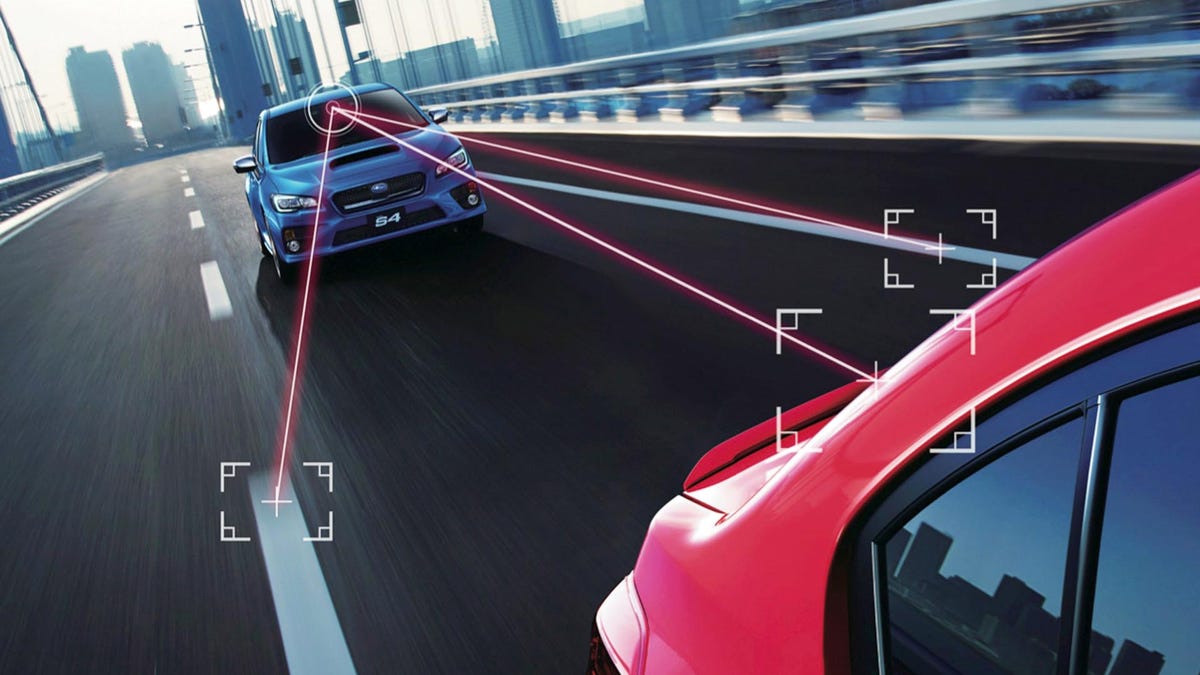How automatic emergency braking helps save lives
Yes, autobraking tech does what it says on the tin: It automatically brakes to help prevent a crash. But there's more to it than that. Roadshow explains.

We're pretty good drivers, you and I. At least, we'd like to believe we are. However skilled, everyone's occasionally glanced down for a second or two to adjust the radio or climate controls. A vehicle going 70 mph travels over 100 feet in that second, which doesn't leave a whole lot of room for reaction if the car ahead chooses that moment to slam on the brakes.
Fortunately, technology is here to help in the form of the automatic emergency braking systems offered on many modern vehicles.
Autobraking tech was once an option reserved for luxury cars (like the Mercedes-Benz S Class here), but we're seeing it trickle down to more affordable models.
AEB, you know me
Automatic emergency braking (AEB) systems are almost always tied into a complementary forward collision warning (FCW) system, which makes sense since they use the same sensors. For the front of the vehicle, these systems are usually radar- or camera-based, which allows the hardware to look further down the road and operate better at high speeds. Camera-based systems -- Subaru's EyeSight package, for example -- often boast the ability to detect pedestrians.
When an obstruction is detected in the car's path, the FCW will first notify the driver with some sort of audible and visual alert. Some systems, such as Ford's Collision Warning with Brake Support, may even "prime" the brakes, bringing the pads and calipers close to the rotors so that they're ready to instantly grab, reducing braking reaction time. Sometimes they're also tied into systems that will prime the seatbelts, cinching them tight to reduce passenger movement during severe braking.
Every millisecond is critical when a collision is imminent, so if the FCW is ignored or missed by an inattentive driver, the AEB system steps in, automatically engaging the brakes.
At lower speeds -- the specifics of which will vary depending on the vehicle and the distance to the obstruction -- an autobraking system may be able often to prevent a collision completely, bringing the car to a stop short of an impact. At higher velocities, the system may not be able to prevent a crash, but its ability to reduce speed before impact can greatly reduce the severity of a collision.
Once a cutting-edge tech option reserved for luxury cars, we're starting to see the tech trickle down. Mazda and Nissan, for example, have committed to make AEB systems standard on many of their most attainable cars.
Rear autobraking
Similar collision-avoidance technology can be applied to the rear of the vehicle. Now, because reversing almost never happens at highway velocities, rear autobraking systems are usually geared toward lower speeds and more often use cameras or sonar to detect obstructions, rather than being radar-based.
Lower speed means that when properly implemented, rear systems often have a better chance of completely avoiding a collision, which is good, because the "obstruction" is more likely to be a human or animal in parking lot or driveway situations.
Other autobraking assist systems
Most autobraking systems keep an eye on the car directly ahead of you or the area directly behind, but some systems (like Infiniti's Predictive Forward Collision Warning with Forward Emergency Braking) claim to be able to watch up to two cars ahead to give drivers even more of an edge when reacting to emergency stops.
Some systems also tie into rear cross-traffic alert systems, which detect oncoming vehicles from the side when reversing. The addition of autobrake assist can help prevent you from reversing into the path of traffic when backing out of a blind alley or parking spot.
Audi's Turn Assist (part of the Pre Sense suite) can autobrake to prevent a head-on collision.
One of the newest evolutions of autobraking is Audi's Turn Assist tech. This system looks at oncoming lanes when preparing to make a turn across traffic. If another car is heading your way midturn (maybe they ran the light or maybe you didn't see them coming) the system can detect the impending collision and automatically brake, stopping before you move into its path at speeds below about 6 mph.
Know before you go
We've learned from years of reviewing driver-aid systems that AEB is one of the trickiest technologies to test. You're not going to get a demo during your test drive. The first time most will experience the technology will be in an emergency situation.
I mentioned earlier that the speed at which an autobraking system can bring a car to a stop depends on the size of the vehicle, but most automakers publish some sort of estimate. Most fall within the 30 to 45 mph range, but you'll want to check for your ride of choice.
It's also useful when an autobraking system is paired with some sort of distance monitoring system. Technologies such as Volvo's Distance Alert can be annoying, but they also help you keep a safe following distance, which gives the emergency braking system a better chance of preventing a collision if you have a lapse of attention at a critical moment. All the tech in the world can't help if you're tailgating like a jerk.
Adaptive cruise control systems are convenient and are often bundled with FCW and AEB; the three technologies use the same sensors and hardware. Because adaptive cruise slows to keep a safe following distance behind the leading car, it can help prevent situations where you'd have to emergency brake (or have the car brake for you) in the first place.

